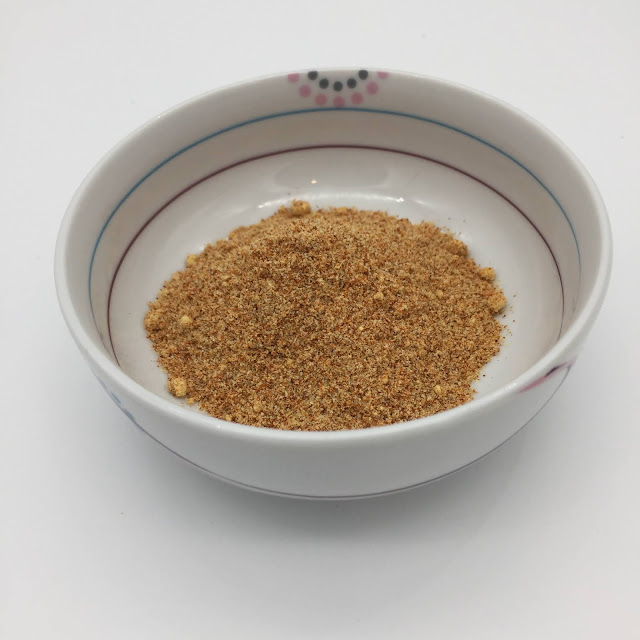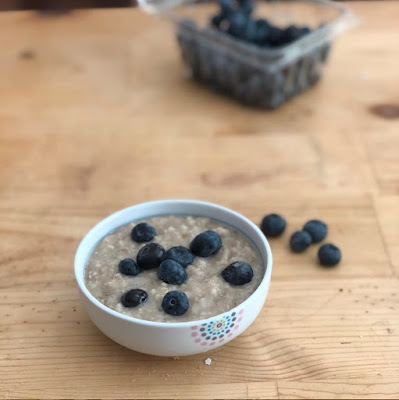Flavors are such an important part of our enjoyment of eating. The combination of flavors can make for an exquisite experience. How things taste is our guide in life for what we will and will not eat. For me, it is a way to entice me to eat foods that are good for my health...I am still working on not eating foods that aren't tasty and just a waste of calories. I do believe the more we treat our lives and mouths and noses to fresh foods with delicious flavors and smells we will be less willing to eat those other foods that are not about flavor but just about calories.
Spices are the key to flavor. They are also great for our health. They can do everything from ward off colds to increase our metabolism. I first became aware of the breadth and depth of the power of spices when my husband and I went on the "Fat Flush Diet" a few years ago. The author, Ann Louise Gittleman, PhD, CNS, explains the benefits of various spices in her
Fat Flush Plan. She also explains why each spice is good for you. Below are her favorites-
Anise- Mildly aromatic. Helpful for liver, kidneys, and stomach. Some consider it an aphrodisiac. Good to use with cauliflower, cabbage, turnips, beef, shellfish, cakes and cookies.
Basil- Aromatically robust. Helps nervous exhaustion, anxiety, colds, depression, substance abuse, and drug withdrawal. An petite stimulant. Good to use with salads, sauces, stews, soups, stuffing and dips. And a pesto staple.
Bay Leaf- Semi-mild taste and aroma. Known to relieve bronchitis, arthritis, and atherosclerosis. Tones and strengthens digestive tract. Good to use with soups, chowders, stews, roasts, gravies and marinades.
Cardamom- Strongly aromatic with an aftertaste reminiscent of lemons. Helps treat indigestion, asthma, bronchitis, celiac disease, bad breath, spastic colon, and vomiting. Some consider it an aphrodisiac. Goes well with curries, rice and breads. Especially nice in herbal teas and coffees.
Cayenne- Hot and spicy. Helps soothe irritated tissues. Stimulates circulation, relieves migraines, assists digestion, breaks up congestion and stimulates the adrenal hormones which speed up the breakdown of fat by 25 percent. Good to use with sauces, vegetables, beans, dips, fish and meat.
Cilantro- Mild and spicy. A heavy metal eliminator. It relieves bloating, diarrhea and GI tract disorders. Good to use with salads, soups, tomato-based dishes and as a garnish.
Cinnamon- Subtle and sweet-spicy. Helpful for diabetics by making cells more insulin-sensitive, can boost the body's ability to balance blood sugar by twenty-fold. Good for cramps, bloating and flatulence. Can be used in lamb, beef, chicken and with fruits, breads, onion dishes, squash, tomatoes, sweet potatoes, cereal grains, cookies and cakes.
Cloves- Highly aromatic and sweet. Acts as a parasite fighter.Also aids in relieving diarrhea, sore throats, toothaches and stomach cramps. Good in stewed fruit, roasts, wild game, sweet potatoes and tea.
Coriander- Moderately spicy with a hint of orange peel. Helpful in reducing bloating, cramps and GI disorders. Good to use in curry-based dishes, carrots, fish, chicken, eggs, beans and rice.
Cumin- Distinctively spicy with earthy, meaty flavor. Improves liver function and relieves gas, colic and digestive-connected headaches. Good to use in beans, dips, stews, lamb, beef and sauces.
Dill- Mildly aromatic. Helpful for indigestion, colic, bad breadth and insomnia. Good to use with fish, cucumbers, beans salads and salad dressings, cabbage, soup, cottage cheese, egg dishes and tofu dips.
Fennel- Mild taste and aroma. Helpful as a natural digestive aid and as a phytoestrogen. Also good for bad breadth, diabetes, kidney stones and nausea.Can be used with fish, turkey, cabbage, onions, tomato sauces, stews, cookies and cakes.
Garlic- Pungent. Helps to protect against heart disease, asthma, diabetes, flu and stomach cancer. Well known as an antiparasitic, antifungal and antiyeast herb. Good with fish, poultry, game, vegetables, soups, beans, salsas, salad dressings, casseroles, marinades and just about anything else you can think of when cooking!
Ginger- Hot, pungent and warming. Good for motion sickness, muscle soreness, arthritis, headaches, poor circulation, flatulence, and menstrual cramps. Serves as a natural blood thinner and anti-inflammatory. Perks up meats, marinades, root vegetables, fruits, cookies and cakes.
Horseradish- Pungent. Helpful for relieving sinus congestion and clearing excess mucus and phlegm. Great addition to dips, meatloaf, egg dishes and sauces.
Marjoram- Fragrant and flavorful. Relieves mentrual cramps, bronchitis, calms nerves, and is helpful for insomnia. A nice addition to sauces soups, stews, stuffings, and salads.
Mint- Mildly aromatic. Helps relieve flatulence, fatigue, gallbladder problems, morning sickness, and nausea. Also acts as a parasite fighter, antimicrobial and digestive aid. Perfect for lamb, peas, salads, lentils and beverages, including hot tea.
Mustard- Moderately spicy. Increases our body's fat burning ability, raises body temperature, acts as a diuretic and increases circulation. Used with eggs (think-deviled eggs), meats, sauces, dips, as a condiment, in salad dressings, marinades and with shellfish.
Nutmeg- Warming, powerful and sweet. A natural digestive aid, it relieves flatulence, coughs and reduces pain. Great to use in soups, sauces, cheese and shellfish dishes, sauteed spinach, with cauliflower and in cookies and cakes. Also tasty in eggnog.
Oregano- Pungent and mildly spicy. A well-respected antibacterial, antiviral, anti-inflammatory and antioxidant. It also relieves candida, nausea, colic, bronchitis and motion sickness. Oregano seasons tomatoes, vegetables, salad dressings and sauces.
Parsley- Mild taste and aroma. Treats problems with kidneys, gout, anemia, jaundice and arthritis as well as being a natural diuretic. Complements all cuisine, especially salads and salad dressings, soups, tofu dishes, souffles, dips and pates. Great as a garnish on anything.
Rosemary- Pungently spicy. Potent antioxidant, energy booster, relieves upset stomach and good for memory and hair. Great with lamb, chicken, potatoes, marinades, casseroles and breads.
Sage- Sharp, spicy and highly aromatic. A great astringent, good for colds, flu and fevers. Also good for the flow of bile and a remedy for menopausal symptoms. Goes well with stuffing, poultry, egg casseroles and omelets, sauces, peas, onions, cottage cheeses and other casserole dishes.
Tarragon- Mild and aromatic. Supports digestion function and acts as a natural diuretic. Enhances chicken, fish and other seafood, egg dishes and salad dressings.
Thyme- Delicate and aromatic. A natural antibiotic, good for colds, asthma, colic, hangovers, hay fever, headaches and cough. Helps with digestion of fatty foods. Goes well with stuffing, soups, sauces, stews, peas and lentils.
Turmeric- Mildly spicy. Stops food poisoning (think-salmonella), a great anti-cancer antioxidant, detoxifies the body of harmful chemicals and treats arthritis. Used with curries, beans, fish dishes and scrambled tofu.



































